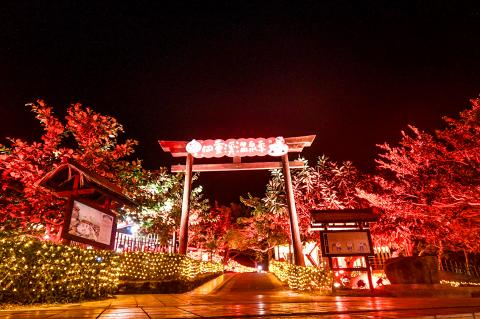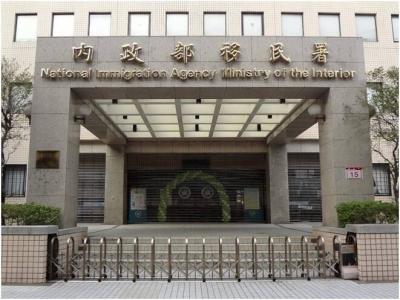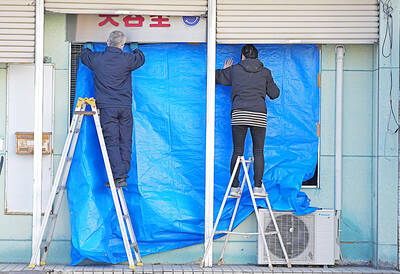Upgrades to the hot spring park along Pingtung County’s Sihchong River (四重溪) are drawing tourists back to the region, as the number of visitors has risen over the past two years, the county government said on Monday.
The Pingtung Transportation and Tourism Department said that investment in the area — once a popular hot spring destination, due to the county’s ocean vistas and other scenery — has started to bring bathers back.
The county last month announced that it would provide assistance to investors at the hot springs near the river, saying it hoped investor interest and creativity could speed up development in the area.

Photo: Tsai Tsung-hsien, Taipei Times
During the Japanese colonial period, Sihchong — along with Tainan’s Guanzihling (關子嶺) and Taipei’s Beitou District (北投) and Yangmingshan National Park (陽明山國家公園) — was considered one of the island’s four best hot spring areas, the county said.
However, in recent decades, as domestic tourism patterns changed and Sihchong’s facilities aged, the number of visitors decreased, the department said.
The hot springs park at Sihchong River, built by the Japanese colonial administration in 1933, fell into disrepair and was overgrown with weeds when the county government secured about NT$100 million (US$3.32 million at the current exchange rate) from the central government to renovate it two years ago, it said.
The department was careful to retain the park’s unique Japanese style, it said, adding that the park has become a hot spot for visitors to the county, along with nearby sites, such as Fu An Temple (福安宮) and the Shihmen historic battlefield (石門古戰場).
The county government this year started promoting small businesses in the area, helping to establish shops selling unique local products around the river, which has attracted more visitors, along with artistic light installations, it said.
The results have made the county aware of opportunities for future development, it added.
The hot springs are often visited together with other nature sites in the region, including the Dongyuan wetlands (東源濕地), the Syuhai hot springs (旭海溫泉) and the Alangyi Ancient Trail (阿塱壹古道), it said.

A small number of Taiwanese this year lost their citizenship rights after traveling in China and obtaining a one-time Chinese passport to cross the border into Russia, a source said today. The people signed up through Chinese travel agencies for tours of neighboring Russia with companies claiming they could obtain Russian visas and fast-track border clearance, the source said on condition of anonymity. The travelers were actually issued one-time-use Chinese passports, they said. Taiwanese are prohibited from holding a Chinese passport or household registration. If found to have a Chinese ID, they may lose their resident status under Article 9-1

Taiwanese were praised for their composure after a video filmed by Taiwanese tourists capturing the moment a magnitude 7.5 earthquake struck Japan’s Aomori Prefecture went viral on social media. The video shows a hotel room shaking violently amid Monday’s quake, with objects falling to the ground. Two Taiwanese began filming with their mobile phones, while two others held the sides of a TV to prevent it from falling. When the shaking stopped, the pair calmly took down the TV and laid it flat on a tatami mat, the video shows. The video also captured the group talking about the safety of their companions bathing

PROBLEMATIC APP: Citing more than 1,000 fraud cases, the government is taking the app down for a year, but opposition voices are calling it censorship Chinese Nationalist Party (KMT) Chairwoman Cheng Li-wun (鄭麗文) yesterday decried a government plan to suspend access to Chinese social media platform Xiaohongshu (小紅書) for one year as censorship, while the Presidential Office backed the plan. The Ministry of the Interior on Thursday cited security risks and accusations that the Instagram-like app, known as Rednote in English, had figured in more than 1,700 fraud cases since last year. The company, which has about 3 million users in Taiwan, has not yet responded to requests for comment. “Many people online are already asking ‘How to climb over the firewall to access Xiaohongshu,’” Cheng posted on

A classified Pentagon-produced, multiyear assessment — the Overmatch brief — highlighted unreported Chinese capabilities to destroy US military assets and identified US supply chain choke points, painting a disturbing picture of waning US military might, a New York Times editorial published on Monday said. US Secretary of Defense Pete Hegseth’s comments in November last year that “we lose every time” in Pentagon-conducted war games pitting the US against China further highlighted the uncertainty about the US’ capability to intervene in the event of a Chinese invasion of Taiwan. “It shows the Pentagon’s overreliance on expensive, vulnerable weapons as adversaries field cheap, technologically